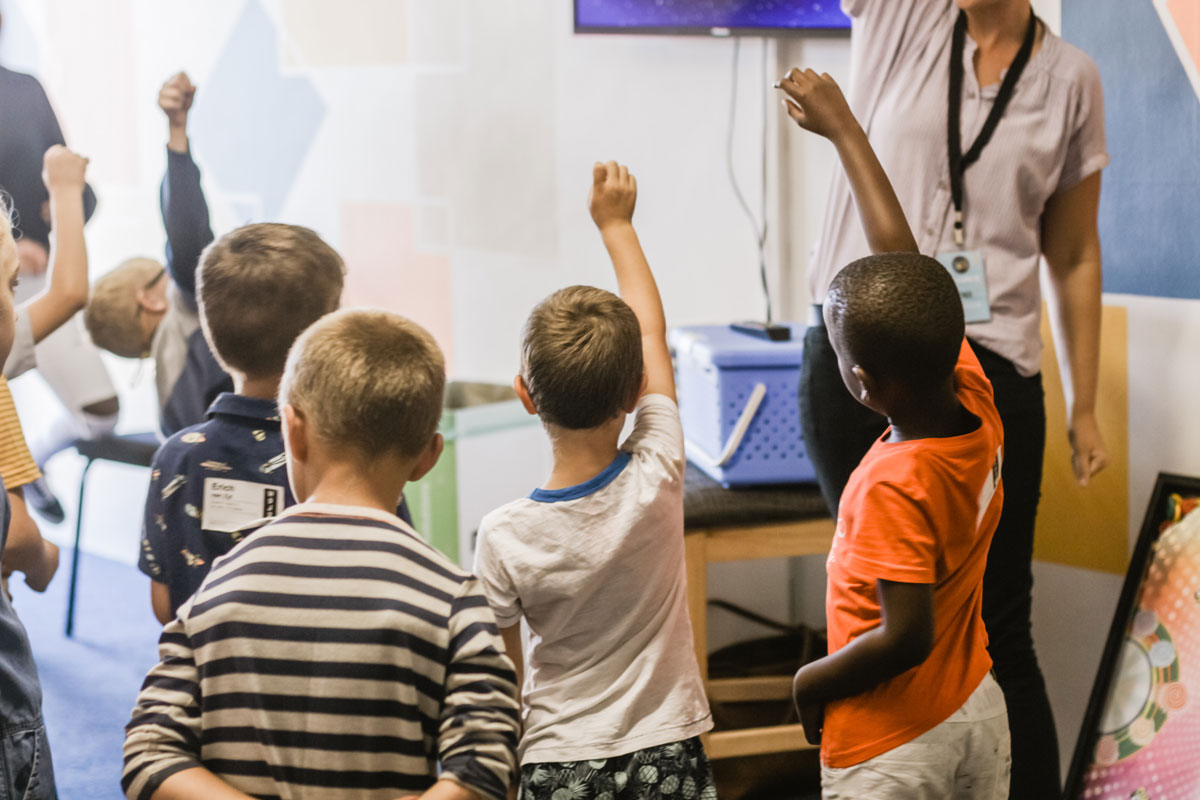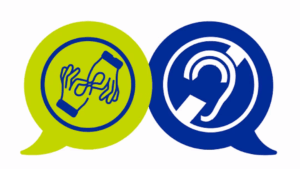For Deaf students, having an interpreter makes all the difference in their academic careers. One adage (often attributed to Helen Keller) states; “Blindness cuts us off from things; deafness cuts us off from people“. While conventional interpreting facilitates comprehension, Educational Interpreters for the Deaf also create social connection. As these students often face stigma in a hearing world, providing this additional support in the classroom is invaluable.
The Importance of Interpreters
The Americans with Disabilities Act (ADA) passed in 1990 and ushered in a growing awareness of Deaf needs. In particular, schools learned that educational interpreters for Deaf students greatly helped students who might otherwise struggle to succeed. As with second-language students, native speakers who comunicate in ASL are at a disadvantage in the English-only classroom. They run the risk of lagging further behind when the school does not attend to their linguistic needs. Classroom interpreting for Deaf students is incredibly important: it ensures equal treatment and access to educational opportunity.
Educational interpreting is as much a specialization as medical, legal, or any similar division. It requires training and certification, terminology use and comprehension, and a background understanding of core educational concepts. Any school that calls upon the services of an interpreter for a Deaf student should seek an accredited professional. The Registry of Interpreters for the Deaf (RID) and Commission on Collegiate Interpreter Education (CCIE) maintain rubrics for qualification. You can also contact an interpreting agency, such as Global Arena, to find the vendor who suits your needs. Ultimately, the best educational interpreters are those who are not only bilingual but also understand classroom dynamics.

ASL in the Classroom Setting
A common misconception about American Sign Language (ASL) is that it is merely English spoken with the hands. However, ASL is an independent language with its own grammar, vocabulary, syntax, and narrative structure. An educational interpreter for Deaf students needs not only professional Interpreting training for ASL, but also classroom training. The educational setting also includes different power dynamics than a “typical” interpreting assignment. One party (the student) has, by definition, less information and authority than the other (the teacher). Classroom interpreters must bridge not only the language gap, but also a knowledge gap, to facilitate the learning process.
Another complication often seen in a classroom setting is that there are frequently activities that require group interaction and communication. In these cases, classroom interpreters need to facilitate conversations between Deaf and hearing students. As children learn and grow at different rates, students in a group often have different levels of language sophistication. With training, Educational Interpreters are able to effortlessly move between a number of speech styles while interpreting. This in turn helps the Deaf student learn how to follow speech that is exchanged by several people at once. The Deaf student can also hone their skills in lip-reading and English language comprehension with their Educational Interpreter’s help.
Naturally, it is the Deaf student who benefits most from an interpreter’s presence—but hearing students also benefit. It exposes them in a casual way to Deafness, demonstrating that their classmate is as capable as they are. Building this positive bond between students from different linguistic backgrounds improves the classroom experience for everyone present. The hearing students may also pick up some ASL themselves to engage more easily with Deaf students.
ASL Interpreting as a Video Remote Interpreter
As the Corona Virus keeps students and teachers away from the classroom, Video Remote Interpreting is more important than ever. Many Deaf students are the only Deaf people in their families. This means that the bulk of their communication in their language (ASL) comes at school, from support staff and interpreters. Video Remote Interpreting in a “virtual classroom setting” (for example, a Zoom call) is vital for Deaf student participation. Deaf students have the same educational and social needs as other children, but with the extra need for a facilitator. ASL interpreters provide that facilitation.
ASL interpreting as a Video Remote Interpreter in the virtual classroom setting works relatively the same as in-person classroom interpreting. The only difference is that it’s fully online, by video. The interpreter receives a link for the Zoom call (or any other platform the school chooses) and the start time. The interpreter logs on at the appropriate time and makes sure the Deaf student can see their video. To accomplish this, the interpreter might send a private chat to the student and ask them to “pin the video.” Pinning the interpreter’s video means that the interpreter is front and center on the Deaf student’s screen. The interpreter can then interpret as usual between the Deaf student and teachers or classmates.
Video Remote Interpreting is also a viable option for after-school appointments and activities. The student can bring their portable device (laptop, phone, ipad) and use it during the appointment for the interpreting session. This minimizes interpreter-student contact and risk of Corona transmission or infection.
So You’d Like to Be an ASL Interpreter?
Learning ASL is a challenge: to achieve the fluency necessary to become an interpreter takes years of study and practice. Many interpreters grow up bilingual or have childhood exposure to native-level ASL in their youth, which eases the process. It’s not impossible and with dedicated work you can succeed. The work requires endurance, as it is not only tiring on the mind but also on the hands and fingers. Additionally, for classroom settings, it’s helpful understand the subject(s) you will have to convey to Deaf students. At the elementary school level this might not be a challenge, but what about world history or physics? ASL also has various dialects, and students within the Deaf community may have unfamiliar “accents” to their signing. Prospective educational interpreters must be conscious of this diversity, ready to handle any unknown words in a given student’s repertoire.
Training and practice helps ease these concerns and makes overcoming them second nature. It’s a meaningful profession in which you get to see firsthand the positive impact you have. And if you decide to simply hire a classroom interpreter instead, Global Arena’s happy to help!
Contact Us for more information about Classroom Interpreting
 




